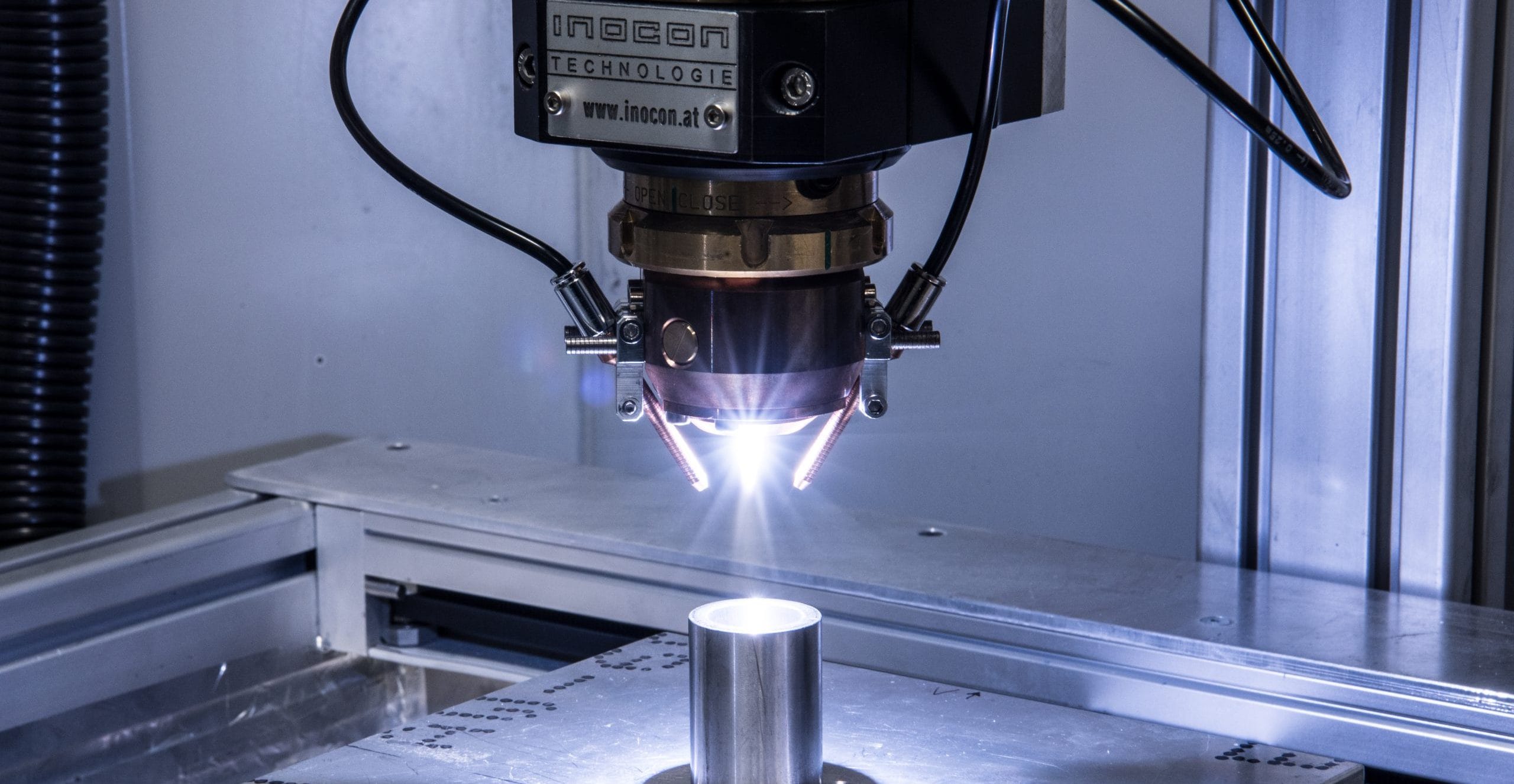- About us
- Research expertise
- DIGITAL – Institut für Digitale Technologien
- MATERIALS – Institut für Sensorik, Photonik und Fertigungstechnologien
- ROBOTICS – Institut für Robotik und Flexible Produktion
- COREMED – Zentrum für Regenerative Medizin und Präzisionsmedizin
- HEALTH – Institut für Biomedizinische Forschung und Technologien
- LIFE – Institut für Klima, Energiesysteme und Gesellschaft
- POLICIES – Institut für Wirtschafts-, Sozial und Innovationsforschung
- Business areas
- Products & services
- Research infrastructure
- Beteiligungen
- Career
- Aktuelles
- Publications
- Kontakt zu uns
Vacuum and plasma coating processes
Our laboratory includes technologies for functional plasma coating at low temperatures from atmospheric pressure to fine and high vacuum.

Atmospheric pressure plasma system, Photo: JOANNEUM RESEARCH/Schwarzl
Our services include the development, characterisation and production of functional coatings under atmospheric pressure (~1013 hPa (mbar)), in low pressure fine vacuum (~0.1 Pa) and high vacuum (~10-5 Pa) and range from problem analyses, literature research and feasibility studies to prototype production and small series coating.
What is an atmospheric pressure plasma coating system for?
Atmospheric pressure plasma coating technologies (ADPB), e.g. with plasma jets, do not require a vacuum chamber and are therefore subject to hardly any size restrictions with regard to the components to be coated. Possible applications of ADPB include the activation of polymer surfaces by oxygen or inert gas and the deposition of pure metal, oxide and polymer coatings doped with (nano) particles as wear protection, corrosion protection and barrier layers or as biocompatible, antibacterial or biofunctional layers and as electrical insulation layers or conductor tracks and electrodes.
What happens in a low-pressure plasma system?
Low-pressure plasma offers a wide range of surface modification options, e.g. fine cleaning of contaminated components, plasma activation of plastic parts, etching of PTFE or silicon and the coating of plastic and metal parts with PTFE-like layers (see practical example of HMDSO anti-adhesive layer on structured nickel moulding).
What are the advantages of magnetron cathode sputtering?
The advantages of this technology are pore-free, high-purity layers, which are corrosion-reducing or friction-reducing, for example, the deposition of insulators (e.g. aluminium oxide or boron nitride) and semiconductors, low heating of the substrate and relatively high deposition rates of up to 10 nanometres per minute.
Find out more about our services in the area of Functional coatings of components.

Your contact
Location
Das sagen unsere Kunden
Further research infrastructure
Printing technologies for the development of customised 2D, 2.5D and 3D printing processes
Measurement and analysis of the smallest structures, layers and components on a micro- and nanometre scale
We use a specially modified EVG770 Nanoimprint Lithography (NIL) stepper for the large-scale production of micro- and nanostructures in UV imprint resins. Together with special materials and processes, we achieve the highest precision right down to practically seamless transitions between individual structures.
Certified class 6 cleanroom for nanostructures and innovative electronic components and sensors
Microassembly Lab for photonic and electronic assemblies
This highly precise maskless laser system (MALA) is suitable for the production of highly complex and stepless micro-optical structures.
The lab includes flexible, rapid prototyping processes to produce a variety of structures in a wide range of materials.
We offer laser material processing and many years of expertise in materials science.
State-of-the-art development infrastructure for integrated electronic and optical design including EMC and ESD - open to industrial partners.
Our R2R-UV-NIL pilot line enables the continuous and cost-effective production of micro and nanostructures on flexible large-area film substrates for applications in lighting, photovoltaics, AR/VR, AR/VR, microfluidics, diagnostics, security, film finishing and packaging, the pharmaceutical industry and life sciences.
State-of-the-art infrastructure for light measurement and prototype production for integrated optical and electronic design - open to industrial partners.
SHAPING THE FUTURE, TOGETHER
JOANNEUM RESEARCH provides innovation and technology services in the field of applied research. As a research company working on behalf of various federal provinces and regions in Austria, our expertise shapes the development of our modern society and economy – sustainably, and always with a focus on people. As a multidisciplinary team working in a flexible set-up that fosters innovation, we always live up to the highest social and scientific standards.



